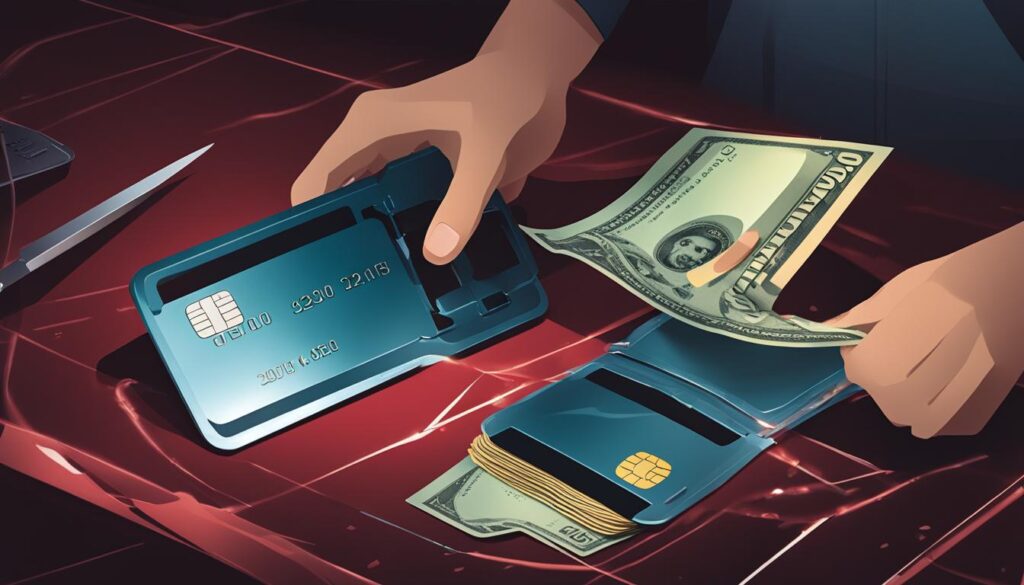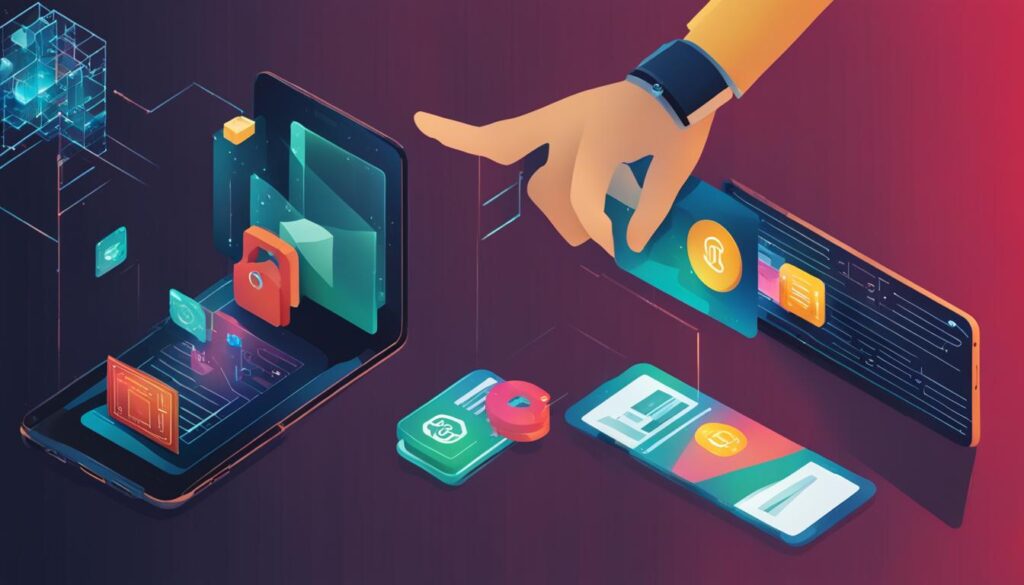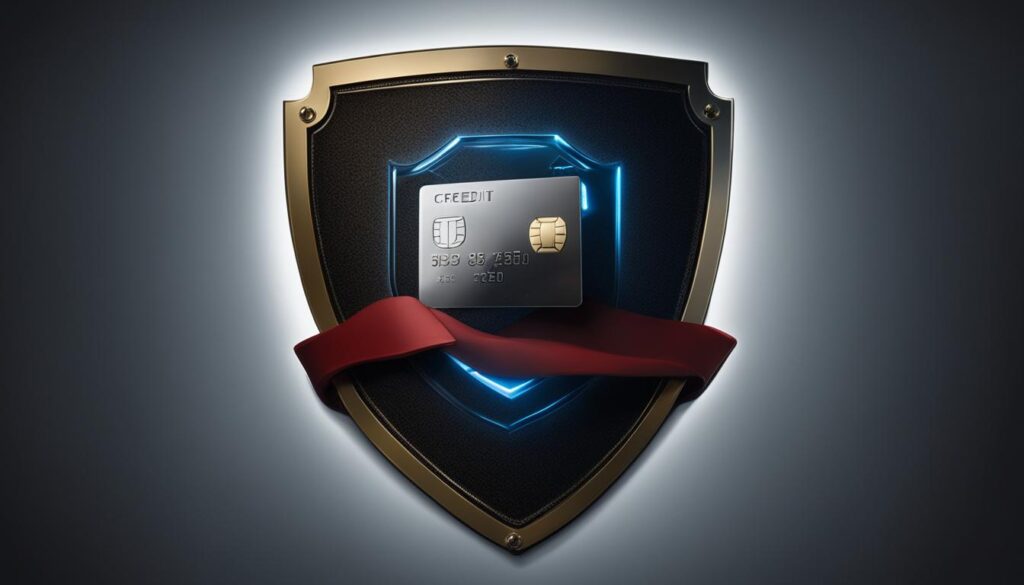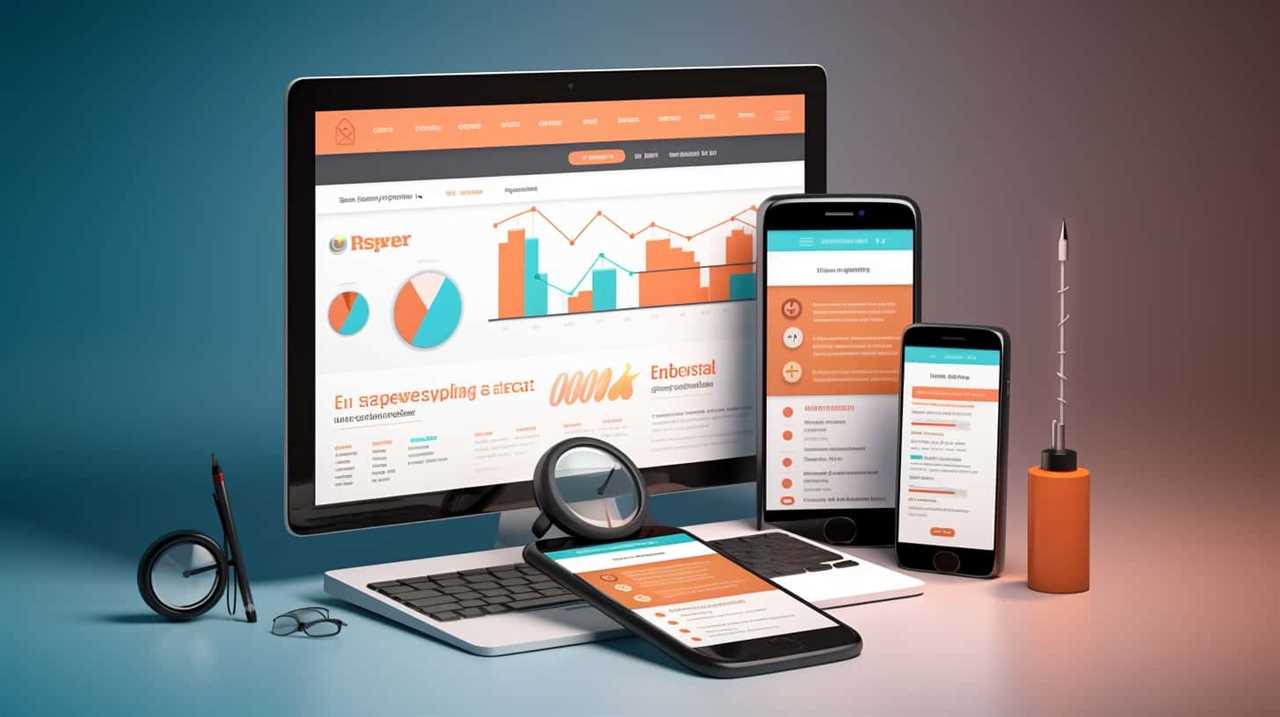Fraudsters are growing more adept at devising schemes that lead people into financial jeopardy. It’s vital for everyone to acknowledge these dangers and actively work to safeguard our earnings. Through the adoption of strong financial security measures and maintaining alertness, we can shield ourselves from these tricksters and prevent succumbing to their sophisticated strategies.
At [Company Name], we understand the importance of protecting against scams and maintaining financial security. In this article, we will explore the world of scammers who seek to trick us into financial losses and provide valuable insights on how to stay one step ahead.
Key Takeaways:
- Be aware of the various tactics scammers use to trick individuals into financial losses.
- Implement financial security measures to safeguard your finances.
- Stay vigilant and remain informed about the latest scamming techniques.
- Protect your digital wallets and credit cards from fraudulent activities.
- Regularly monitor your accounts for any unauthorized charges or suspicious activities.
Understanding Digital Wallet Fraud
As digital wallets continue to gain popularity, it’s important to be aware of the potential risks and scams associated with them. Digital wallet fraud has become a growing concern, with scammers using various tactics to trick unsuspecting individuals out of their money. By understanding how these scammers operate and implementing fraud prevention techniques, you can protect yourself from falling victim to digital wallet fraud.
Scammers employ a range of tactics to target digital wallets. One common tactic is phishing scams, where scammers try to trick you into revealing your personal information or login credentials by posing as a legitimate entity. They may send you fake emails or create fraudulent websites that look like the real deal. Another tactic is the use of malware attacks, where scammers infect your device with malicious software that can steal your digital wallet information. Additionally, scammers may create fake apps and websites that mimic popular digital wallet platforms, tricking users into entering their credentials and gaining access to their funds. Lastly, social engineering techniques are often used, where scammers manipulate individuals into divulging sensitive information through psychological manipulation.
To protect yourself from digital wallet fraud, there are several important fraud prevention techniques you can implement. First and foremost, always verify the legitimacy of any digital wallet app or website before providing your personal information. Check for secure HTTPS connections, read user reviews, and ensure the app or website is from a reputable source. It’s also crucial to regularly update your device’s operating system and digital wallet app to ensure you have the latest security patches. Additionally, be cautious when clicking on links or downloading files from unknown sources, as these could potentially contain malware. Lastly, practice good password hygiene by using strong and unique passwords for your digital wallet accounts, and enable multi-factor authentication whenever possible.
By understanding the tactics used by scammers, and adopting these fraud prevention techniques, you can protect yourself from falling victim to digital wallet fraud. Stay vigilant, stay informed, and safeguard your finances from these malicious individuals.
How Digital Wallets Work
A digital wallet, also known as an e-wallet or mobile wallet, is an advanced and user-friendly app that acts as a digital storage space for various payment methods. It securely stores payment information such as credit and debit card details within a designated app on smartphones or tablets. This eliminates the need for physical cards and allows for seamless financial transactions via mobile devices.
When using a digital wallet, users can link their bank accounts or credit cards to the app, allowing them to make payments or transfer funds electronically. The app encrypts the payment information, ensuring the security of the user’s financial data. Some digital wallet platforms also offer additional features such as loyalty programs, rewards, and the ability to store digital receipts.
To make a payment with a digital wallet, users simply need to unlock their device, open the app, and select the desired payment method. They can then tap or scan their device at a point-of-sale terminal or enter payment details when shopping online. The app securely transmits the payment information to complete the transaction, providing a convenient and contactless payment experience.
With the increasing popularity of digital wallets, many retailers and service providers now accept mobile payments. Users can make purchases at physical stores, online merchants, or even transfer money to friends and family. Digital wallets have revolutionized the way we handle our finances, providing a fast, secure, and convenient payment method in the digital age.
| Advantages | Disadvantages |
|---|---|
|
|
Common Scams Targeting Digital Wallets
As digital wallets continue to gain popularity, scammers are finding new ways to exploit unsuspecting users. It is crucial to be aware of the common scams targeting digital wallets and take appropriate measures to protect yourself. In this section, we will explore some of the tactics employed by scammers, including phishing scams, malware attacks, fake apps and websites, and social engineering.
Phishing Scams
One of the most prevalent scams targeting digital wallets is phishing. Scammers use various methods, such as emails, text messages, or phone calls, to trick users into providing their personal and financial information. These phishing attempts often appear legitimate, mimicking reputable companies or financial institutions. It is important to remember that legitimate organizations will never ask for sensitive information through these channels.
Malware Attacks
Another common scam is malware attacks. Scammers use malicious software to gain unauthorized access to your digital wallet and steal your sensitive information. They may trick you into downloading a seemingly harmless file or app that contains malware. To protect yourself from malware attacks, it is essential to only download apps from official app stores and keep your devices’ security software up to date.
Fake Apps and Websites
Scammers also create fake apps and websites that closely resemble legitimate digital wallet services. These fraudulent platforms are designed to trick users into entering their login credentials or financial information, allowing scammers to gain unauthorized access to their accounts. Always verify the authenticity of an app or website before providing any personal or financial information.
Social Engineering
Social engineering is a tactic used by scammers to manipulate individuals into divulging sensitive information. They may create a sense of urgency or use psychological tricks to convince you to provide your personal or financial details. Stay vigilant and verify any requests for information or transactions independently before taking any action.
By staying informed about these common scams and taking necessary precautions, you can protect yourself from falling victim to digital wallet fraud. Remember to be cautious and skeptical of any requests for personal or financial information, and always use reputable and secure digital wallet services.

Risks and Vulnerabilities
While digital wallets offer convenience and ease of use, they also introduce certain risks and vulnerabilities that users need to be aware of. Understanding these risks is crucial in order to implement effective fraud prevention measures and protect your finances. In this section, we will explore the main risks associated with digital wallets, including payment fraud, machine learning threats, third-party vulnerabilities, and data breaches.
Payment Fraud
One of the primary risks when using digital wallets is payment fraud. Scammers may attempt to gain unauthorized access to your digital wallet and make fraudulent transactions using your payment information. This can result in financial losses and potential damage to your credit score. It is important to remain vigilant and monitor your digital wallet transactions regularly to detect any suspicious activity.
Machine Learning Threats
As digital wallets become more sophisticated, scammers are also finding new ways to exploit them. Machine learning threats involve using artificial intelligence algorithms to identify vulnerabilities in digital wallet systems and exploit them for fraudulent purposes. These threats can be difficult to detect and require advanced security measures to mitigate.
Third-Party Vulnerabilities
Digital wallets often rely on third-party services and integrations to facilitate transactions and provide additional features. However, these third-party services can introduce vulnerabilities, as they may not have the same level of security measures in place. Scammers may target these weak points to gain unauthorized access to your digital wallet and steal your payment information.
Data Breaches
One of the most significant risks associated with digital wallets is the potential for data breaches. If a digital wallet provider’s security systems are compromised, it can lead to the exposure of sensitive user data, including payment information. Data breaches can have severe consequences, including financial loss and identity theft. It is crucial to choose digital wallet providers that prioritize robust security measures and regularly update their systems to protect against such breaches.
| Risk | Description | Prevention Measures |
|---|---|---|
| Payment Fraud | Unauthorized access to digital wallets leading to fraudulent transactions | – Regularly monitor transactions and report any suspicious activity to your digital wallet provider – Enable two-factor authentication for added security – Use strong and unique passwords for your digital wallet accounts |
| Machine Learning Threats | Exploiting vulnerabilities in digital wallet systems using AI algorithms | – Implement advanced security measures, such as robust encryption and anomaly detection – Conduct regular security audits and updates – Collaborate with cybersecurity experts to identify and address potential machine learning threats |
| Third-Party Vulnerabilities | Exploiting weaknesses in third-party services integrated with digital wallets | – Research and choose reputable digital wallet providers that prioritize security – Regularly review the security measures of third-party services and ensure they meet industry standards – Limit the amount of personal and financial information shared with third-party services |
| Data Breaches | Security breaches leading to unauthorized access and exposure of user data | – Choose digital wallet providers with strong security protocols and a history of proactive data protection – Regularly update your digital wallet app to ensure you have the latest security patches – Monitor news and announcements from your digital wallet provider regarding any potential security breaches |
Organizational Measures to Prevent Digital Wallet Fraud
As digital wallet fraud continues to pose a threat to financial security, organizations must take proactive measures to protect their users. By implementing advanced security measures, conducting routine system updates, and prioritizing education initiatives, we can enhance the overall security of digital wallets.
One crucial step in preventing digital wallet fraud is implementing strong ID verification and authentication procedures. This ensures that only authorized individuals can access and use the digital wallet. By employing multi-factor authentication methods such as biometrics or one-time passwords, organizations can significantly reduce the risk of fraudulent activities.
“Implementing strong ID verification and strong authentication measures is crucial for preventing unauthorized access to digital wallets and protecting user funds.”
In addition to ID verification and authentication, organizations must establish robust fraud prevention and detection mechanisms. This involves implementing real-time monitoring systems to identify suspicious activities and protect users from fraudulent transactions. By investing in advanced fraud detection tools and technologies, organizations can proactively detect and mitigate potential threats.
Regularly updating systems is another critical organizational measure in preventing digital wallet fraud. By promptly patching vulnerabilities and addressing security flaws, organizations can stay one step ahead of scammers. Routine system updates ensure that digital wallets have the latest security features and patches, reducing the risk of exploitation by fraudsters.
| Organizational Measures to Prevent Digital Wallet Fraud |
|---|
| Implementing advanced security measures |
| Conducting routine system updates |
| Prioritizing education initiatives |
| Implementing strong ID verification and authentication procedures |
| Establishing robust fraud prevention and detection mechanisms |
By combining these organizational measures, we can create a safer digital wallet ecosystem and protect users from falling victim to fraud. It is essential for organizations to continuously evaluate and improve their security practices to stay ahead of evolving fraud tactics. With proactive measures in place, we can safeguard the financial interests of individuals and promote greater trust in digital wallet platforms.
Individual Measures to Prevent Digital Wallet Fraud
When it comes to protecting your digital wallet from fraud, verification and authentication are key. By taking individual measures to verify the source of digital wallet apps and enhancing authentication methods, you can significantly reduce the risk of falling victim to scams. Here are some steps you can take:
- Source Verification: Before downloading and installing a digital wallet app, verify its authenticity. Check if it is offered by a reputable company or financial institution. Avoid downloading apps from unknown sources or third-party websites.
- Enhanced Authentication: Utilize strong authentication methods to add an extra layer of security to your digital wallet. This could include setting up a PIN or using biometric authentication such as facial recognition or fingerprint scanning.
- Be Cautious with Personal Information: Avoid sharing sensitive personal information such as passwords, PINs, or security codes with anyone. Legitimate digital wallet providers will never ask for this information through unsolicited emails or messages.
- Stay Alert while Performing Transactions: When making transactions through your digital wallet, ensure that you are using a secure and trusted network. Avoid conducting financial transactions when connected to public Wi-Fi networks, as they are often unsecured and susceptible to interception.
By following these individual measures, you can enhance the security of your digital wallet and reduce the risk of fraud. Remember to stay vigilant and report any suspicious activity to your digital wallet provider immediately.
“The safety of your digital wallet lies in your hands. By verifying the source and enhancing authentication, you can protect your finances and stay one step ahead of fraudsters.” – Digital Security Expert
It is worth noting that while these measures can significantly reduce the risk of digital wallet fraud, they do not guarantee complete security. It is essential to stay informed about the latest security threats and regularly update your digital wallet app and mobile device with the latest security patches. Additionally, consider enabling features such as transaction alerts and two-factor authentication for added protection.

| Source Verification | Enhanced Authentication |
|---|---|
| Verify the authenticity of digital wallet apps before installation. | Utilize strong authentication methods such as PIN or biometric authentication. |
| Download apps from trusted sources. | Never share sensitive information such as passwords or security codes. |
| Avoid third-party websites or unknown sources. | Stay alert while performing transactions, especially on unsecured networks. |
table {
width: 100%;
border-collapse: collapse;
margin-bottom: 20px;
}
th {
background-color: #f2f2f2;
font-weight: bold;
text-align: left;
padding: 8px;
}
td {
padding: 8px;
border-bottom: 1px solid #ddd;
}
blockquote {
border-left: 4px solid #ddd;
padding: 10px 20px;
margin: 20px 0;
font-style: italic;
}
img {
display: block;
margin: 20px auto;
max-width: 100%;
}
h3 {
margin-top: 30px;
}
Recent Cases of Digital Wallet Fraud
There have been recent cases of digital wallet fraud that serve as a reminder of the importance of staying vigilant and taking necessary precautions to protect your financial information. Two notable cases include the MetaMask wallet case and the Slope Wallet case.
The MetaMask wallet case involved scammers creating a malicious app that impersonated the legitimate MetaMask wallet, which is a popular digital wallet used for interacting with decentralized applications (DApps) on the Ethereum blockchain. Unsuspecting users downloaded the app, thinking it was the official MetaMask wallet, but instead, it stole their private keys and allowed the scammers to access their funds. This incident highlights the need to verify the source of digital wallet apps and only download them from reputable sources.
The Slope Wallet case centered around a mobile wallet app that promised users high returns on their investments. However, after users deposited their funds into the app, it was discovered that the whole operation was a scam. The creators of the app disappeared with the users’ money, resulting in significant financial losses for those involved. This case serves as a cautionary tale to thoroughly research and exercise caution when engaging with unfamiliar digital wallet platforms.
In today’s digital landscape, staying informed and taking steps to protect your digital wallet is paramount. The MetaMask wallet case and the Slope Wallet case are just a few examples of the risks associated with digital wallet fraud. By staying vigilant, verifying sources, and exercising caution, we can minimize the chances of falling victim to these scams.
Table: Recent Cases of Digital Wallet Fraud
| Case | Description |
|---|---|
| MetaMask Wallet Case | Scammers created a malicious app impersonating the legitimate MetaMask wallet, resulting in stolen private keys and access to users’ funds. |
| Slope Wallet Case | A mobile wallet app promised high returns on investments but turned out to be a scam, resulting in significant financial losses for users. |

Engineering Solutions for Digital Wallet Fraud Prevention
Preventing fraud in digital wallets requires a proactive approach. By implementing engineering solutions, we can enhance security and protect users from falling victim to fraudulent activities. These solutions focus on preventing fraud proactively, enabling remote device attestation, implementing strong authentication measures, and integrating KYC (Know Your Customer) and AML (Anti-Money Laundering) procedures.
One of the key engineering solutions for digital wallet fraud prevention is analyzing user behavior to detect potential fraud. By studying patterns and identifying suspicious activities, we can take immediate action to protect users and their funds. Additionally, remote device attestation plays a crucial role in ensuring the security of digital wallets. This process verifies the integrity of the device used by the user, reducing the risk of unauthorized access or tampering.
Authentication is another vital aspect of preventing digital wallet fraud. Implementing strong authentication methods, such as biometrics (such as fingerprint or facial recognition) or multi-factor authentication, adds an extra layer of security. These measures make it more difficult for fraudsters to gain unauthorized access to digital wallets.
Integrating KYC and AML procedures is essential for preventing fraudulent activities. KYC helps verify the identity of users, ensuring that they are who they claim to be. AML procedures, on the other hand, focus on detecting and preventing money laundering activities within digital wallets. By combining these two measures, we can create a secure environment for financial transactions and protect users from fraud.
Engineering Solutions for Digital Wallet Fraud Prevention:
| Solution | Description |
|---|---|
| Proactive fraud prevention | Analyze user behavior to detect potential fraud and take immediate action. |
| Remote device attestation | Verify the integrity of the user’s device to reduce the risk of unauthorized access. |
| Strong authentication measures | Implement biometrics or multi-factor authentication for enhanced security. |
| Integration of KYC and AML procedures | Verify user identities and detect and prevent money laundering activities. |
With these engineering solutions in place, we can significantly reduce the risk of digital wallet fraud. By focusing on prevention, user authentication, and compliance with KYC and AML regulations, we can create a secure environment for financial transactions. It is important for digital wallet providers to prioritize these solutions and continuously adapt to emerging fraud trends to ensure the safety and trust of their users.

Credit Card Fraud: What You Need to Know
Unauthorized purchases made using stolen credit card information can have devastating consequences. It is crucial to protect your credit cards from fraudsters who seek to exploit your financial resources. By understanding the risks and taking necessary precautions, you can safeguard yourself against credit card fraud and ensure the security of your funds.
Recognizing Unauthorized Purchases
One of the key signs of credit card fraud is unauthorized purchases appearing on your statement. It is essential to regularly review your credit card statements to identify any suspicious transactions. If you notice unfamiliar charges or purchases you did not make, contact your credit card provider immediately. Acting swiftly can help mitigate potential losses and prevent further unauthorized activity.
Protecting Your Credit Cards
To protect your credit cards from fraud, it is important to take proactive measures. Here are some tips:
- Keep your credit cards secure at all times, ensuring they are not easily accessible to others.
- Memorize your PIN and never share it with anyone.
- Be cautious when providing credit card information online. Only enter your details on secure and reputable websites.
- Regularly monitor your credit card activity and report any suspicious transactions to your card issuer.
- Consider using credit card alerts to receive notifications of transactions made with your card.

Reporting Credit Card Fraud
If you suspect that your credit card has been compromised or you have fallen victim to fraud, it is imperative to take immediate action. Contact your credit card issuer to report the fraudulent activity and request a replacement card. They will guide you through the necessary steps to dispute unauthorized charges and restore your account to its rightful state. Additionally, reporting credit card fraud helps financial institutions enhance their fraud detection and prevention measures, protecting other cardholders from similar incidents.
How Credit Card Fraud Can Occur
Credit card fraud can happen through various methods, including physical theft, account hacking, phishing scams, and credit card skimming. Scammers employ these tactics to gain access to credit card information and make fraudulent transactions.
Physical theft involves someone physically stealing your credit card or obtaining your credit card information through illegal means, such as pickpocketing or home break-ins. This method allows scammers to use your credit card to make unauthorized purchases or withdraw cash.
Account hacking occurs when scammers gain unauthorized access to your online banking or credit card account. They may use sophisticated hacking techniques or take advantage of weak passwords and security measures. Once they have access, they can manipulate your account and make unauthorized transactions.
Phishing scams are another common method used by scammers to trick individuals into revealing their credit card information. They often disguise themselves as legitimate companies or financial institutions and send fraudulent emails or messages asking for personal and financial details. If you unknowingly provide this information, scammers can use it to make unauthorized transactions.
Credit card skimming involves scammers illegally obtaining your credit card information by using skimming devices. These devices are often placed on ATMs, gas pumps, or other payment terminals. When you use your card, the skimming device collects your card details, allowing scammers to create counterfeit cards or make fraudulent purchases online.
Table: Methods of Credit Card Fraud
| Method | Description |
|---|---|
| Physical Theft | Scammers steal your credit card or obtain your card information illegally through pickpocketing or home break-ins. |
| Account Hacking | Scammers gain unauthorized access to your online banking or credit card account to manipulate your account and make fraudulent transactions. |
| Phishing Scams | Scammers disguise themselves as legitimate companies or financial institutions and trick individuals into revealing their credit card information. |
| Credit Card Skimming | Scammers use skimming devices to illegally collect credit card information from ATMs, gas pumps, or payment terminals. |
Credit Card Fraud Prevention Tips
When it comes to protecting your credit cards from fraud, there are several important steps you can take. By being cautious about who you give your information to, using tools that protect your data, and monitoring your accounts regularly, you can significantly reduce the risk of falling victim to credit card fraud.
Be careful who you give your information to: It’s crucial to be cautious about sharing your credit card information. Only provide your card details to trusted and reputable merchants or service providers. Avoid giving out your credit card information over the phone or through email unless you initiated the contact and are certain of the recipient’s identity.
Use tools that protect your data: Take advantage of tools and technologies that add an extra layer of security to your credit card transactions. Consider using a virtual private network (VPN) when making online purchases to encrypt your data and protect it from potential hackers. Additionally, utilize secure payment options such as tokenization or two-factor authentication whenever possible.
Monitor your accounts regularly: Regularly reviewing your credit card statements and transactions is essential for detecting any unauthorized charges or suspicious activity. Keep a close eye on your accounts, and report any discrepancies or fraudulent activity to your credit card issuer immediately. Many credit card issuers offer fraud alerts and monitoring services to help you stay vigilant.
“By being cautious about who you give your information to, using tools that protect your data, and monitoring your accounts regularly, you can significantly reduce the risk of falling victim to credit card fraud.”
Conclusion
Protecting yourself from fraud and scams is essential for maintaining financial security. By understanding the tactics scammers use and implementing effective fraud prevention measures, you can safeguard your hard-earned money.
Throughout this article, we have covered various aspects of fraud prevention, including digital wallet fraud and credit card fraud. By staying vigilant, verifying sources, and using enhanced authentication methods, you can minimize the risk of falling victim to scams.
Remember to regularly monitor your accounts for any unauthorized activity and be cautious about who you share your personal information with. By taking these steps and following the tips outlined in this article, you can protect yourself against scams and ensure your financial security.
FAQ
How can I protect myself from scammers tricking me into financial losses?
You can protect yourself by understanding the tactics scammers use, implementing financial security measures, and staying vigilant.
What is digital wallet fraud?
Digital wallet fraud refers to fraudulent activities targeting digital wallets, such as phishing scams, malware attacks, fake apps and websites, and social engineering.
What is a digital wallet?
A digital wallet is an app that securely stores payment information, allowing for seamless financial transactions via mobile devices.
How can I prevent falling victim to common scams targeting digital wallets?
You can prevent falling victim to common scams by verifying the source of digital wallet apps, using enhanced authentication methods, and being cautious when sharing personal information or performing transactions.
What are the risks and vulnerabilities associated with digital wallets?
Risks and vulnerabilities include payment fraud, machine learning threats, vulnerabilities in third-party services, and the potential for data breaches.
What organizational measures can digital wallet providers take to prevent fraud?
Digital wallet providers can implement advanced security measures, regularly update systems, conduct education initiatives, implement strong ID verification and authentication procedures, and establish robust fraud prevention and detection mechanisms.
What individual measures can I take to prevent digital wallet fraud?
You can verify the source of digital wallet apps, use enhanced authentication methods, and be cautious when sharing personal information or performing transactions.
Can you provide examples of recent cases of digital wallet fraud?
Yes, recent cases include the MetaMask wallet case and the Slope Wallet case.
How can engineering solutions help prevent digital wallet fraud?
Engineering solutions can help prevent digital wallet fraud by analyzing user behavior, enabling remote device attestation, implementing strong authentication measures, and integrating KYC (Know Your Customer) and AML (Anti-Money Laundering) procedures.
What is credit card fraud?
Credit card fraud occurs when someone uses your credit card details without your consent to make unauthorized purchases or access your funds.
How can credit card fraud occur?
Credit card fraud can occur through methods such as physical theft, account hacking, phishing scams, and credit card skimming.
What are some credit card fraud prevention tips?
To prevent credit card fraud, be careful about who you give your information to, use tools that protect your data (such as VPNs), and monitor your accounts regularly for any unauthorized charges or suspicious activity.










